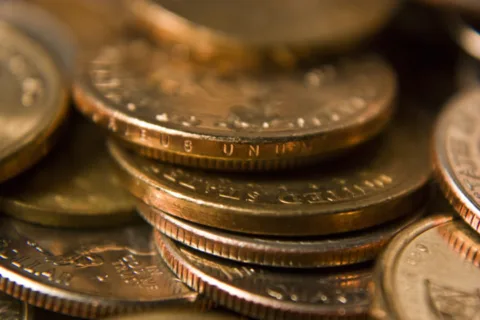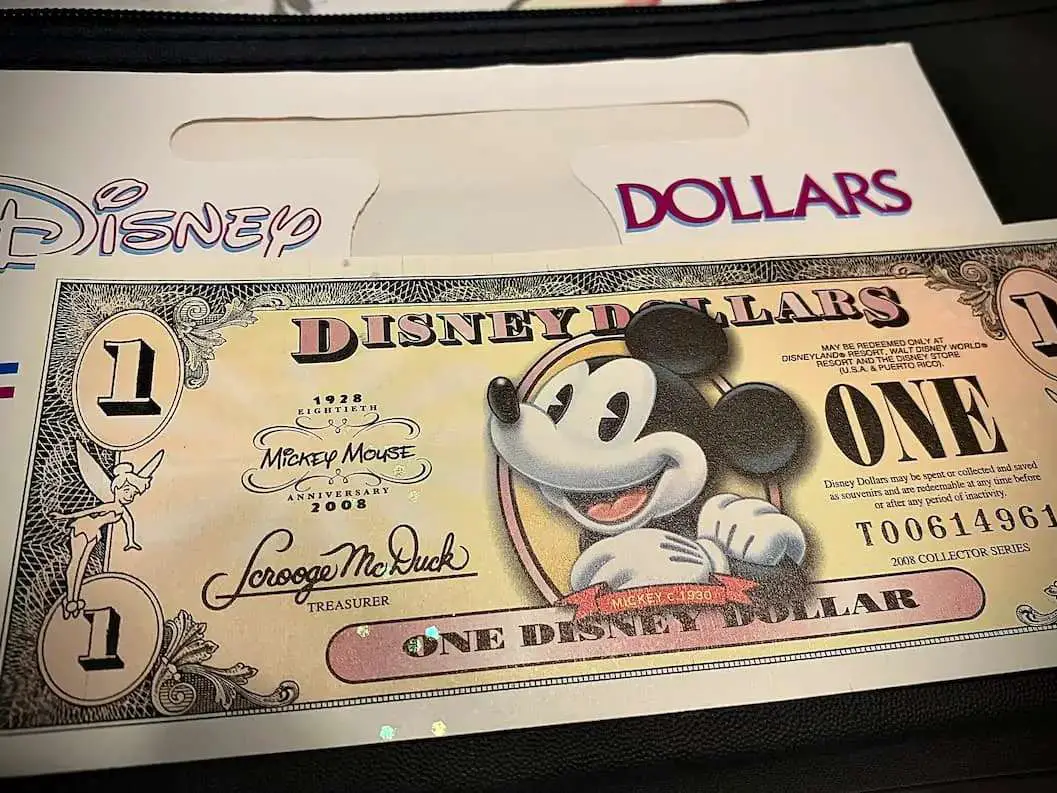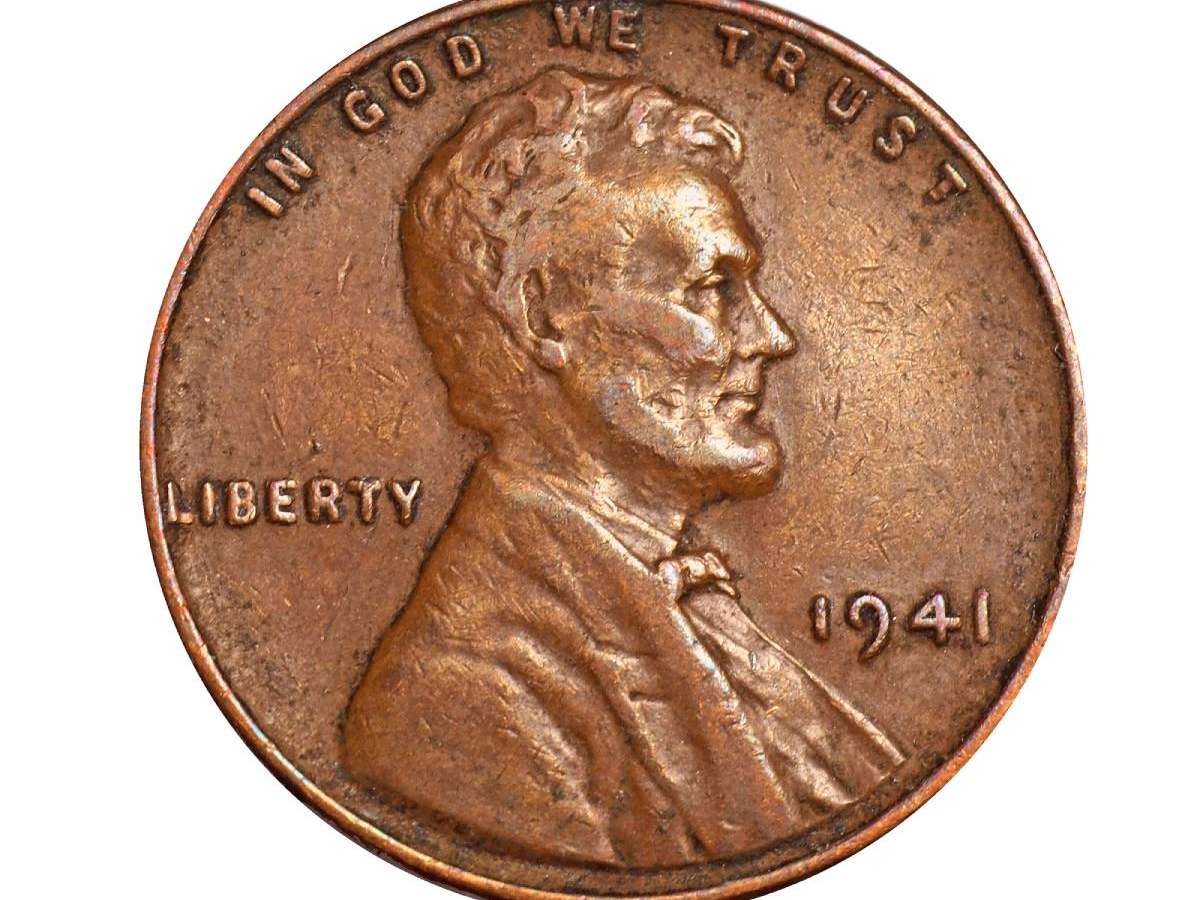Most of the coins you come across every day have either smooth edges or reeded edges.
But it’s not every day we find U.S. coins that have letters and words imprinted on the edge.
Edge lettering allows more room for the coin’s design.
In terms of modern coinage, 2007 is the year that edge lettering was reinstated for U.S. coins in circulation. That’s the year that Presidential dollar coins contained letters on the edges.
Here’s more about the U.S. Mint’s use of edge letters on coins — on modern coins, and on older coins…
Modern U.S. Coins With Edge Lettering
The Presidential dollar coin series brought mainstream attention to edge letters on coins.
The series ran from 2007 through 2016. The edge lettering on these dollar coins included:
- the date the coin was struck
- the coin’s mint mark
- “E PLURIBUS UNUM”
- “IN GOD WE TRUST”
- 13 stars
Interestingly, only Presidential dollar coins struck in 2007 and 2008 have the words “IN GOD WE TRUST” included in the edge lettering.
Why is that?
Because there was a good deal of controversy generated over the seeming omission of “IN GOD WE TRUST” from Presidential dollar coins in 2007 and 2008. (Most of those who complained did not realize the motto was on the coin’s edge.)
The U.S. Mint responded by placing “IN GOD WE TRUST” under the portrait on the coin’s obverse in 2009 and on all other Presidential dollar coins through 2016. All of the other inscriptions remained on the edge of Presidential dollar coins.
Coin edge lettering was also used on Native American dollars which were issued beginning in January of 2009.
Here’s more about edge lettering on Native American dollar coins.
Coin Edge Lettering Has Been Around For Years
Edge lettering on U.S. coins actually dates back to the 1700s.
For example, early-type half dollars (those made in the U.S. from 1794 through 1836) have edge lettering which contains the following words “FIFTY CENTS OR HALF A DOLLAR.”
There are several design variations of the early half dollar with edge lettering:
- Flowing Hair half dollar (1794-1795)
- Draped Bust half dollar with small eagle reverse (1796-1797)
- Draped Bust half dollar with heraldic eagle reverse (1801-1807)
- Capped Bust half dollar (1807-1836)
Early silver dollars minted during the years 1794 to 1804 also contain edge lettering. They have the following inscription on the coin’s edge “HUNDRED CENTS ON DOLLAR OR UNIT.”
There were a few coin edge design variations from 1794 to 1804, including:
- Flowing Hair dollar (1794-1795)
- Draped Bust with small eagle reverse (1795-1798)
- Draped Bust with heraldic eagle reverse (1798-1804)
Ultra-High Relief Saint-Gaudens Coin Edges
One of America’s most celebrated coins also contains edge lettering.
The Augustus Saint-Gaudens double eagle $20 gold coin, which was struck from 1907 through 1933, featured edge lettering. The edge lettering contains the inscription “E PLURIBUS UNUM”, with stars dividing the words.
In 2009, as a nod to the original Saint-Gaudens double eagle, the U.S. Mint made an ultra-high relief Saint-Gaudens gold coin with edge lettering.
This double eagle was minted but never released into circulation. (The original ultra-high relief Saint-Gaudens coin could not be minted in large numbers due to technical reasons — flatter relief designs were produced instead.)
Like the other Saint-Gaudens gold coins, the 2009 ultra-high relief coin edge contains the inscription “E PLURIBUS UNUM,” with each word divided by stars.
Errors With Edge Lettering
So, the modern coins that most commonly carry edge lettering are the golden dollars — particularly the Presidential $1 coins, Native American dollars, and American Innovation dollar coins.
However, the edge lettering is missing from some of these coins.
The reason for this is because this process occurs at a different stage of the minting process.
Some dollar coins missing their edge lettering are popular collectibles called Godless dollars.
Here’s why…
On 2007 and 2008 Presidential dollars, the motto “IN GOD WE TRUST” was supposed to appear on the edges of these coins. But the edge inscription didn’t always make it onto these coins — hence the missing edge lettering error. These errors soon became hot commodities in the coin collecting world, now worth $75 to $100! Just watch out for fakes.
I’m the Coin Editor here at TheFunTimesGuide. My love for coins began when I was 11 years old. I primarily collect and study U.S. coins produced during the 20th century.
I’m a member of the American Numismatic Association (ANA) and the Numismatic Literary Guild (NLG) and have won multiple awards from the NLG for my work as a coin journalist. I’m also the editor at the Florida United Numismatists Club (FUN Topics magazine), and author of Images of America: The United States Mint in Philadelphia (a book that explores the colorful history of the Philadelphia Mint). I’ve contributed hundreds of articles for various coin publications including COINage, The Numismatist, Numismatic News, Coin Dealer Newsletter, Coin Values, and CoinWeek.
I’ve authored nearly 1,000 articles here at The Fun Times Guide to Coins (many of them with over 50K shares), and I welcome your coin questions in the comments below!








